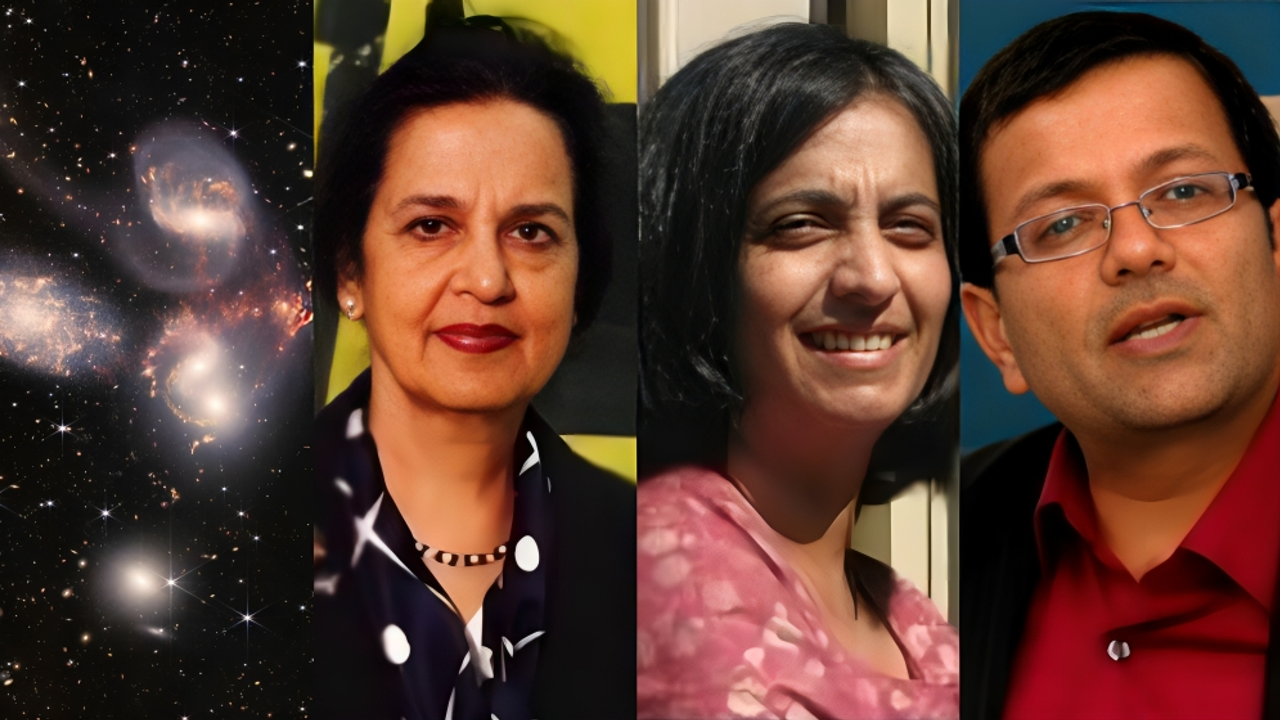NASA released the sharpest image of the universe in 2022 through the James Webb Space Telescope. Behind this historic moment were three Indian-origin scientists who played key roles in making this achievement possible.
In July 2022, NASA shared an image that amazed the world. The James Webb Space Telescope (JWST) captured the deepest and sharpest infrared image of the universe ever taken.

The picture shows parts of the cosmos as they appeared 13 billion years ago, shortly after the Big Bang. It revealed thousands of galaxies, including many that had never been seen before due to their faint light.
NASA Administrator Bill Nelson explained that this small section of the sky, which looks like a grain of sand held at arm’s length, shows just how big and full the universe really is.
What many don’t know is that this historic image has a strong Indian connection, three Indian-origin scientists played key roles in building and managing the telescope that made it possible.
Three Indian-origin scientists helped make it happen
This global success also had strong Indian roots. Three Indian-origin scientists played key roles in developing and managing parts of the James Webb Telescope project.
1. Dr Hashima Hasan:
Deputy Project Scientist, JWST Born in Lucknow, Dr Hasan became fascinated by space when she saw Sputnik at the age of five.
She studied at Aligarh Muslim University, TIFR Mumbai, and earned a PhD in theoretical nuclear physics from Oxford University.
She joined NASA in 1994 and now serves as the Deputy Project Scientist for the JWST.
Dr Hasan manages the science side of the mission, making sure it meets NASA’s strategic goals.
2. Dr Kalyani Sukhatme:
MIRI Project Manager Raised in Mumbai, Dr Sukhatme earned her BTech from IIT Bombay and later completed her MS and PhD in physics from the University of California.
She joined NASA’s Jet Propulsion Laboratory (JPL) in 1998 and became the Project Manager for the MIRI instrument in 2010.
MIRI, or Mid-Infrared Instrument, is one of the four key tools on the JWST.
She helped develop infrared detector technologies for use in space missions.
In 2012, she received the European Space Agency’s JWST award for her achievements.
3. Dr Kartik Sheth:
Programme Scientist, NASA Science Mission Directorate Dr Sheth is part of NASA’s Astrophysics Division. He manages JWST along with other missions like SOFIA and Spitzer.
He earned his MS and PhD in Astrophysics from the University of Maryland and worked at Caltech before joining NASA.
He was also a tenured astronomer at the National Radio Astronomy Observatory.
In 2022, NASA awarded him the Diversity, Equity, and Inclusion Award for his work on racial equality and leading NASA’s Anti-Racism Action Group.
Joe Biden and NASA praise the breakthrough
In a press release, then US President Joe Biden called the images a reminder of what America can do.
“These images are going to remind the world that America can do big things… We can go places no one has ever gone before,” he said.
The James Webb Telescope cost around $10 billion and was launched to replace the Hubble Space Telescope. It focuses on capturing infrared light, which helps us look deeper into space and further back in time.
A moment of pride for India and science
The James Webb Space Telescope’s success has shown how science can bring the world together. For India, it is a proud moment to see scientists of Indian origin contributing at the highest levels of global space research.
Their stories also show that passion for science, hard work, and education can take people from Indian cities to some of the most important missions in space history.


